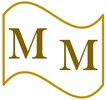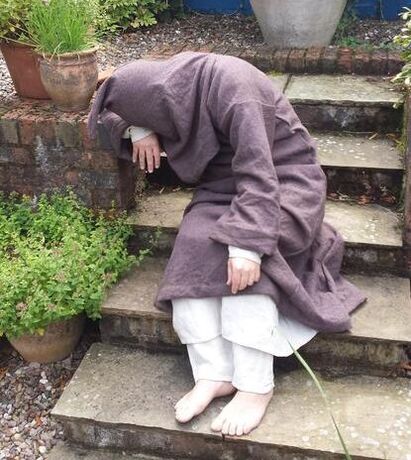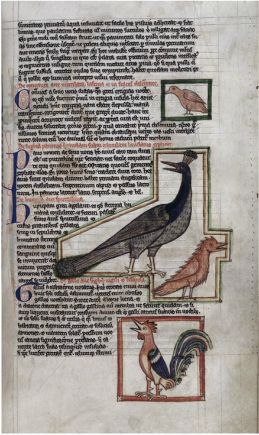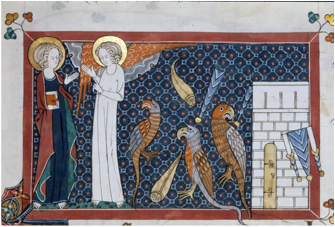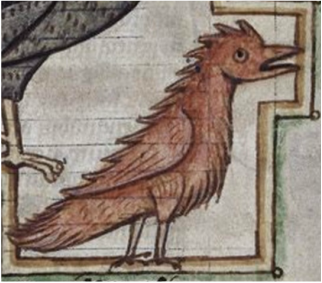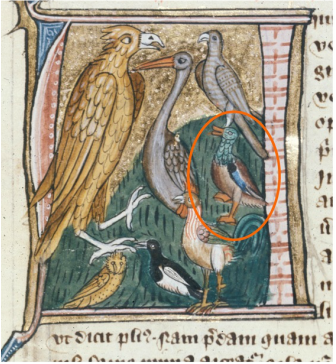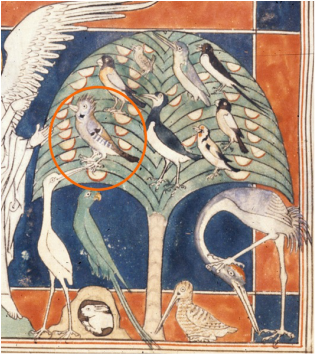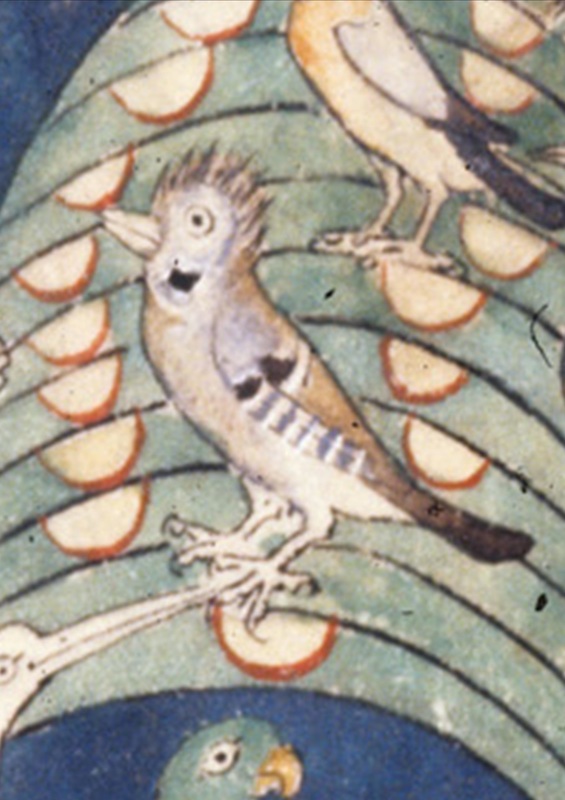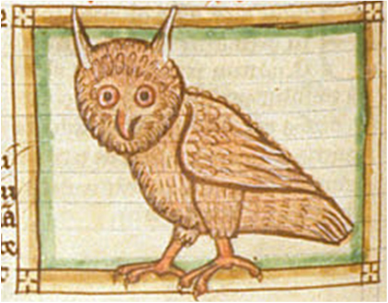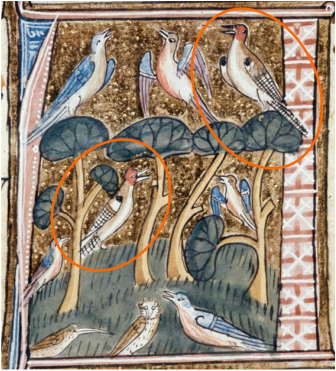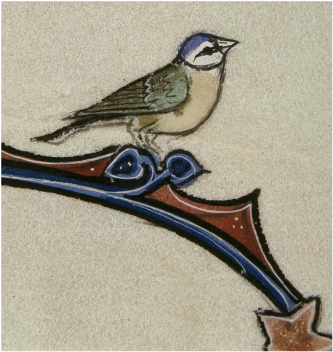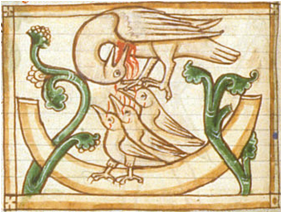 The pelican kills its disobedient offspring then restores them to life with its own blood: an allegory for Christ's redemptive sacrifice. British Library, Harley 3244 (England, 13th-cent.), folio 54v. PUBLIC DOMAIN: Please click on image to go to source. The pelican kills its disobedient offspring then restores them to life with its own blood: an allegory for Christ's redemptive sacrifice. British Library, Harley 3244 (England, 13th-cent.), folio 54v. PUBLIC DOMAIN: Please click on image to go to source. Medieval manuscripts are not particularly well known for their ornithological accuracy. Just take a look at the pelican here! And what ever made the compilers of medieval bestiaries decide to lump the bat in with birds? Well, your guess is as good as mine, blessed readers. In the case of the pelican, of course, an English artist would never have seen one, and so it was more important to visually allude to the allegorical significance than go for naturalism. In case you're wondering, the pelican feeding its young with its own blood represents the redemptive power of Christ's crucifixion. Quite often the subject matter dictates the way birds are represented. If an artist just needs volume, then flocking birds quite often look generic. It's pretty tough going, for example, to find anything other than a generic bird amid Noah's many arks, apart from when the raven and dove enter the story, but even then the rather slipshod approach to ornithological detail would raise an eyebrow from you blessed birders and twitchers out there. And if you look at the Apocalypse scene, top right, the artist has not really gone for a particular species to represent these birds-come-evil spirits. There is something parrot-like about them, true, but their serpentine tails take these birds away from naturalism, though of course this artistic choice may well contribute to the desired feel of malevolence. Well, beloved, I think it's high time you identified the six birds below and demonstrated how well attuned you are to the Lord's avian creation. No shabby responses like 'duck' or 'owl', I want full names, though I will let you off from having to provide them in Latin (nothing to do with my own Latin skills, I hasten to add). If you feel like slipping into immoderate behaviour, you can have a go at identifying those birds in images 3, 4 and 5 which I have not ringed. But remember, pride comes before a fall. My sincere apologies to those of you not from Britain, as these are all birds that live at least part of the year in this lovely land, though I must confess that image 1 is rather tricky even for you natives, so here's a clue: this bird is mentioned in the Bible (generous, I know). Leave your answers in the comments section, and I may think about offering some kind of prize. Answers will be provided in a few days' time.
10 Comments
Chris *The Anglo-Saxon Monk
11/4/2015 06:31:04 am
Oops! Just one right, Doreen :-(
Reply
Chris *The Anglo-Saxon Monk
11/4/2015 06:43:44 am
To help with No. 5 I've now provided a close-up.
Reply
Chris *The Anglo-Saxon Monk*
11/4/2015 12:59:19 pm
Blue tit is correct. Rouen duck bird is almost there; though it's actually the mallard. The Rouen is a domesticated breed developed from the mallard in the 19th century. Long-eared owl is a good stab though the Latin name that appears on the manuscript, bubo, is usually understood as another species (I'll leave that for someone else to work out). I'm afraid the others are not right. No.1 is only a passage bird in UK. Clue: national bird of Israel.
Reply
Mwncïod
12/4/2015 01:27:50 am
1. Hoopoe (Upupa epops)
Reply
Chris *The Anglo-Saxon Monk*
12/4/2015 08:53:11 am
Impressive! All correct and all provided with Latin names (I trust you spelled those correctly). If you would like a prize, I still have kicking around my dusty shelves a hard copy of my Anglo-Saxon England article: 'A Context for the Sexualization of Monsters in The Wonders of the East'. Not exactly a beautiful volume on British birds, but it's the best a poor monk can do -- and remarkably interesting, of course. If you can be persuaded to avail yourself of this not-to-be-missed opportunity for enlightenment, then please leave your postal details via 'contact me' (click on the 'Who I am, What I do' tab). Thanks for all your trouble.
Reply
Ivana
29/4/2015 12:44:36 pm
What a topic :-D. Too bad I'm too late... How about a post on medieval football :-)? I bet your readers would love to hear about it ;-)
Reply
Chris *The Anglo-Saxonot Monk
30/4/2015 03:38:10 am
Intriguing, Ivana. I shall have to do some research on that one... or maybe: Things that remind me of football in medieval manuscripts ...mum :-)
Reply
Your comment will be posted after it is approved.
Leave a Reply. |
Details
|
